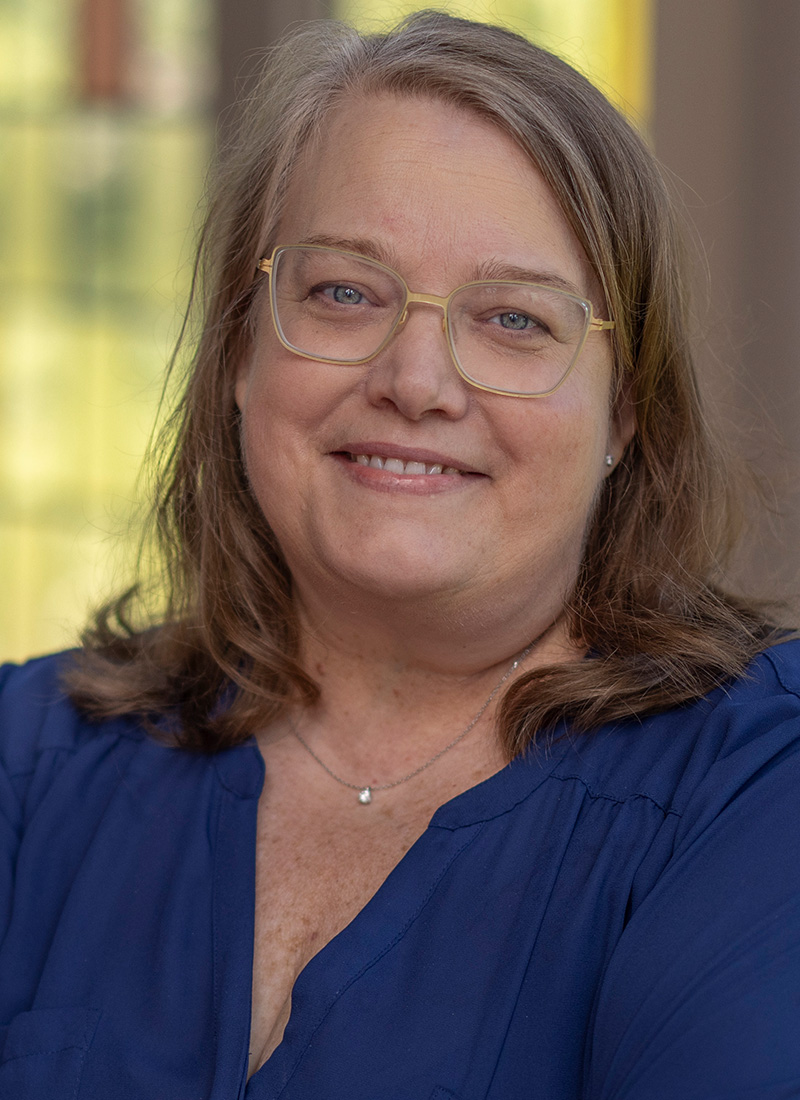RESEARCH INTERESTS
Genetics, Microbiology, Cancer Biology
Dr. Miller studies the growth and division of eukaryotic cells as a highly regulated process. Her research has affirmed that a variety of events important for successful division must be carried out in the proper order, at the proper time, and in the proper location. This coordinated series of events is described as the “cell division cycle” or “cell cycle.” Successful regulation of the cell cycle is paramount to the survival of single and multi-celled organisms ranging from budding yeast to man. Errors in this process usually result in cell death, and at times trigger the accumulation of oncogenic properties, leading eventually to cancer. In Dr. Miller′s lab, three critical aspects of regulated cell division are studied using the model system Saccharomyces cerevisiae.
The Miller lab studies the regulated movement of cyclin proteins that are important for the transition from the G1 to the S phase of the cell division cycle. Genome wide transcriptional and phenomic approaches are used to understand the mechanism of action and the impact on regulated cellular division of the anti-cancer drug KP1019. KP1019 is a ruthenium based agent that has shown promising performance in phase I clinical trials. In yeast, the Miller lab (the collaboration with Pam Hanson and Laura Stultz, BSC) find that KP1019 triggers a DNA damage response and cell cycle specific growth arrest.
SELECTED PUBLICATIONS
Miller, Tobin, Aiello, Hanson, Strome, Johnson, Issel-Tarver, Kushner and Keeney. (2024). CURE on yeast genes of unknown function increases students' bioinformatics proficiency and research confidence. Journal of Microbiology and Biology Education. January 31. https://doi.org/10.1128/jmbe.00165-23
Stultz, Hunsucker, O'Leary, Grovenstein, Blatt, Miller, Mobley and Hanson. (2020). Proteomic analysis of the S. cerevisiae response to the anticancer ruthenium complex KP1019. Metallomics. June 24;12(6):876-890. Doi: 10.1039/d0mt00008f.PMID: 32329475
Mary E. Miller (A. Malcolm Campbell, Editor) (2019). Diseases Preventable by Vaccines. Momentum Press. DOI: 10.5643/9781944749965
Mary E. Miller (A. Malcolm Campbell, Editor) (2018). Infectious Human Disease of the Intestine. Momentum Press. Print ISBN-13: 978-1-94474-987-3, E-book ISBN-13: 978-1-94474-988-0
Mary E. Miller (A. Malcolm Campbell, Editor) (2018). Diseases caused by Dietary Problems. Momentum Press. Print ISBN-13: 978-1-94474-989-7, E-book ISBN-13: 978-1-94474-990-3
Mary E. Miller (A. Malcolm Campbell, Editor) (2018). Cancer. Momentum Press. Print ISBN-13: 978-1-94474-985-9, E-book ISBN-13: 978-1-94474-986-6
Mary E. Miller (A. Malcolm Campbell, Editor) (2018). Diseases Spread by Insects or Ticks. Momentum Press. Print ISBN-13: 978-1-94474-991-0, E-book ISBN-13: 978-1-94474-992-7
Mary E. Miller (A. Malcolm Campbell, Editor) (2016). Nerve Disease ALS and Gradual Loss of Muscle Function: Amyotrophic Lateral Sclerosis. Momentum Press. Print ISBN: 9781944749798; E-book ISBN: 9781944749804.
Mary E. Miller (A. Malcolm Campbell, Editor) (2017). Auto-Immunity Attacks the Body: Autoimmune Disease. Momentum Press. Print ISBN: 9781944749811; E-book ISBN: 9781944749828.
Mary E. Miller (A. Malcolm Campbell, Editor) (2017). Infectious Human Diseases: Bacteria and Viruses. Momentum Press. Print ISBN: 9781944749835; E-book ISBN: 9781944749842.
Mary E. Miller (A. Malcolm Campbell, Editor) (2017). Acquired Immunodeficiency Syndrome (AIDS) Caused by HIV. Momentum Press. Print ISBN: 9781944749934; E-book ISBN: 9781944749941.
Mary E. Miller (A. Malcolm Campbell, Editor) (2016). Gradual Loss of Mental Capacity from Alzheimer's. Momentum Press. Print ISBN: 9781944749774; E-book ISBN: 9781944749781.
Bierle, L. A., K. L. Reich, B. E. Taylor, S. M. Middleton, S. D. Burke, L. K. Stultz, P. K. Hanson, J. F. Partridge, M. E. Miller. (2015) DNA Damage Response Checkpoint activation Drives KP1019 Dependent Pre-Anaphase Cell Cycle Delay in S. cerevisiae. PlosOne 10(9):e0128085.
Duina, A. A., M. E. Miller, J. B. Keeney. (2014) Budding yeast for a budding geneticist: a primer on the Saccharomyces cerevisiae model system. Genetics: 197:33-48.
Stevens, S. K, A. P. Strehle, R. L. Miller, S. H. Gammons, K. J. Hoffman, J. T. McCarty, M. E. Miller, L. K. Stultz, P. K. Hanson. (2013) The anticancer ruthenium complex KP1019 induces DNA damage, leading to cell cycle delay and cell death in Saccharomyces cerevisiae. Molecular Pharmacology. 83:225-234.
Pratt, Z. L, B. J. Drehman, M. E. Miller, and S. D. Johnston. (2007) Mutual Interdependence of MSI1(CAC3) and YAK1 in Saccharomyces cerevisiae. Journal of Molecular Biology.368: 30-43.
Miller, M. E., F. R. Cross, A. L. Groeger, K. L. Jameson. (2005). Identification of novel and conserved functional and structural elements of the G1 cyclin Cln3 important for interactions with the Cdk, Cdc28 in S. cerevisiae. Yeast. 22(13):1021-1036.
Cross, F. R., V. Archambualt, M. Miller, and M. Klovstad. (2002). Testing a Mathematical Model of the Yeast Cell Cycle. Molecular Biology of the Cell. 13(1): 52-70.
Miller, M. E. and F. R. Cross. (2001) Mechanisms controlling subcellular localization of the G1 cyclins CLN2 and CLN3 in budding yeast. Molecular and Cellular Biology. 21(18): 6292-6311.
Miller, M. E. and F. R. Cross. (2001) Cyclin specificity: how many wheels do you need on a unicycle? Journal of Cell Science. 114 (10):1811-1820.
Miller, M. E. and F. R. Cross. (2000) Distinct subcellular localization patterns contribute to functional specificity of the Cln2 and Cln3 cyclins of S. cerevisiae. Molecular and Cellular Biology 20 (2): 542-555.
Miller, Cairns, Levinson, Yamamoto, Engel, and Smith. (1996) Adenovirus E1A specifically blocks SWI/SNF-dependent transcriptional activation. Molecular and Cellular Biology. 16 (10): 5737-5743.
Miller, Engel, and Smith. (1995) Cyclic AMP signaling is required for function of the N-terminal and CR1 domains of adenovirus E1A in Saccharomyces cerevisiae. Oncogene 11: 1623-1630.
